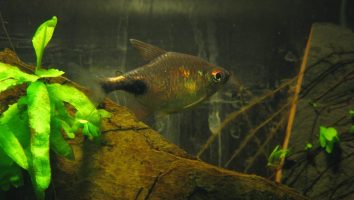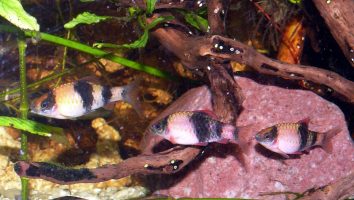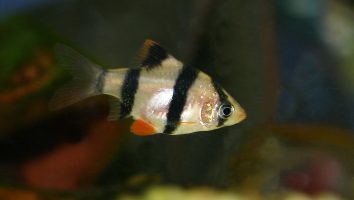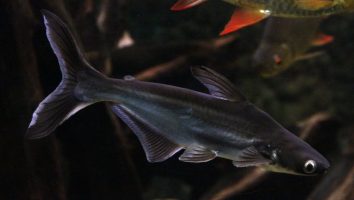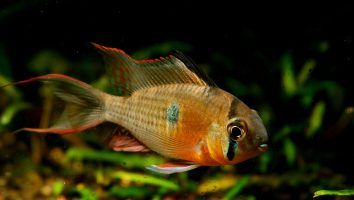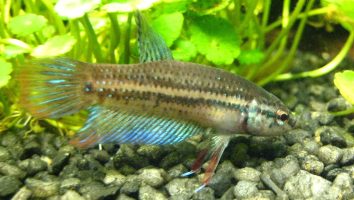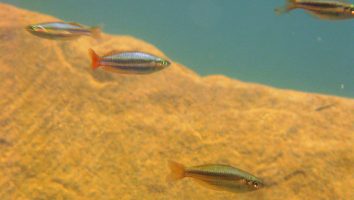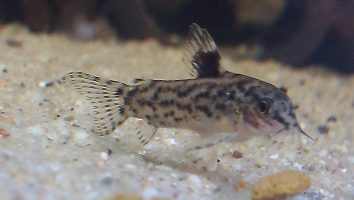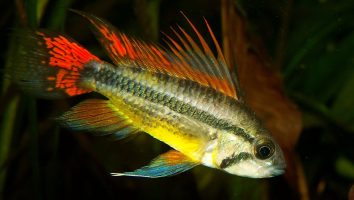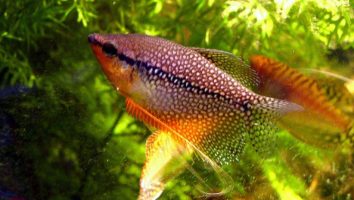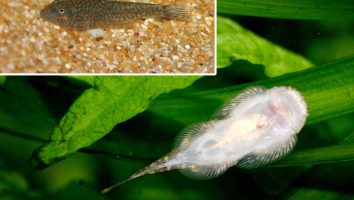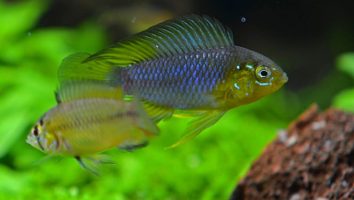The European perch is a stunning freshwater fish that is native to Europe.
This fish is a great addition to any freshwater aquarium, and is known for being a very active swimmer.
If you’re thinking about getting a European perch, you’ll need to know how to care for them properly. In this guide, we’ll teach you everything you need to know about European perch care.
You’ll learn about their diet, tank size, lifespan, and more!
Table of contents
Species overview
The European Perch (Perca fluviatilis) is a freshwater fish that is native to Europe and Asia. It is a predator that is most commonly found in lakes, but can also be found in rivers and streams.
The European Perch is a popular game fish, and is also raised commercially for food.
This species is considered to be an invasive species in North America, where it is believed to have been introduced through the release of bait fish.
The European Perch is a long, slender fish with a greenish-brown back and sides, and a yellowish-white belly. Adults can reach up to 60 cm (24 in) in length, and can weigh up to 4 kg (9 lb).
Appearance
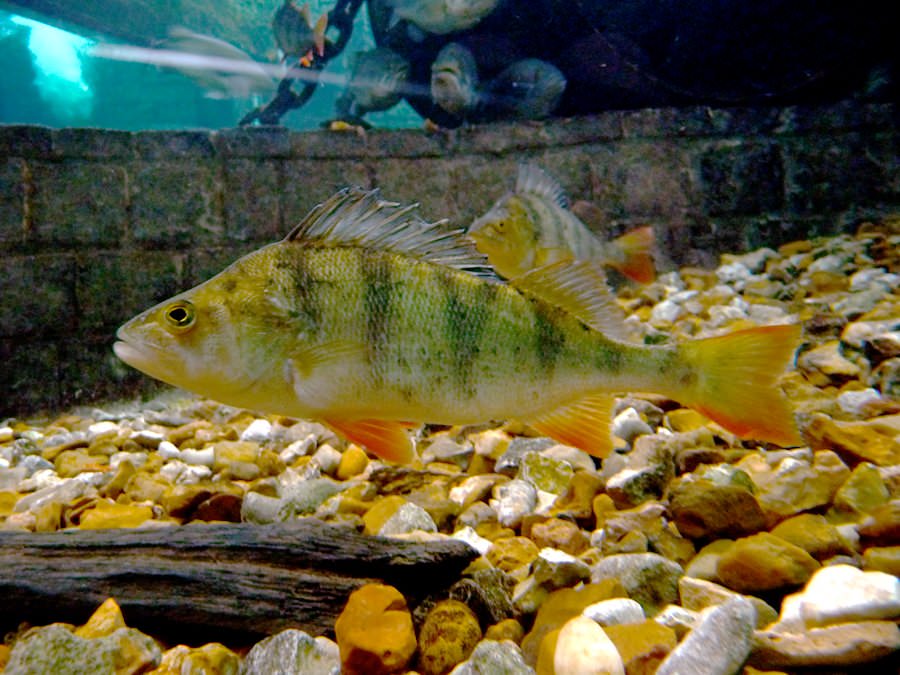
The European Perch is an easily identifiable fish due to their unique coloration. The body of this freshwater fish is olive green in color with a series of dark vertical bands running down their sides.
The dorsal and caudal fins are similarly colored with these bands. The anal fin is a bit lighter in color and doesn’t have any markings.
The ventral fins are white in color which really stands out against the rest of the fish. The pectoral fins are a bit darker and also have these vertical bands.
One of the most interesting features of the European Perch is their eyes. These fish have orange eyes which really stand out against their green bodies.
Their bodies are quite long and thin, giving them a snake-like appearance. They have a long dorsal fin that starts about halfway back on their body. The caudal fin is forked and fairly tall.
The European Perch is a predatory fish that uses these fins to help them swim quickly and navigate through the water.
Lifespan
The average lifespan of a European Perch is 15 years.
This is a pretty long lifespan for a fish and it’s largely due to their low stress levels. These fish aren’t very active and don’t need a lot of food. As long as they have a good diet and their water is clean, they’ll live a long time.
Size
The average European Perch size is between 12 and 14 inches, with some fish getting as big as 18 inches. They are one of the larger freshwater aquarium fish, so you need to be prepared for that when setting up their tank.
Tank
Tank Size
The recommended tank size for European perch is 60 gallons or more. If you’re keeping them in a smaller tank you will need to be extra vigilant about your water quality and do more frequent water changes.
While 60 gallons is the minimum, we recommend going for a larger tank if you can. It will make your life a lot easier and provide the fish with a much more comfortable environment.
Water Parameters
Perch prefer cooler water, and will do best in an aquarium with a temperature between 60 and 70 degrees Fahrenheit. They are a schooling fish, so it is best to keep them in groups of at least six.
Perch are not particularly fussy when it comes to water quality, but they do prefer slightly alkaline water with a pH of 7.5 to 8.5. They also prefer water that is on the harder side, with a hardness of 10 to 20 dGH.
- Water Temperature: 60 to 70 degrees Fahrenheit
- pH Levels: 7.5 to 8.5
- Water Hardness: 10 to 20 dGH
- Alkalinity Levels: 6 to 12 dKH
What To Put In Their Tank
When it comes to setting up the inside of an aquarium for European Perch, you can be as creative as you want. There aren’t any specific things that this species NEEDS to have, which gives you plenty of options.
We recommend some of the standard decorations that you find in a lot of freshwater tanks. There are a ton of great plants you can include (like hornwort or water wisteria). You can even throw in some floating aquarium plants too!
Rocks, driftwood, and caves are all suitable as well. It’s important to avoid going overboard with this since these fish like some room to swim.
Also, if you’re keeping your European Perch in a smaller tank then it’s going to be difficult to include a lot of this stuff anyway.
A classic gravel substrate is always a good choice, but you can do with something soft and sandy if needed too (use other species you keep as a guide with this).
Common Diseases
The European Perch is a fairly hardy fish, but that doesn’t mean they can’t get sick. There are a few diseases that these fish are particularly susceptible to.
The most common disease that affects the European Perch is called “red pest”. This is a viral infection that is most commonly seen in young fish.
The symptoms of this disease are pretty easy to spot. The most obvious one is red blotches on the body of the fish. These blotches will eventually turn into ulcers.
Other symptoms include loss of appetite, lethargy, and increased mucus production.
If you notice any of these symptoms in your fish, it’s important to act fast. This disease is highly contagious and can quickly kill off your entire tank if it’s left untreated.
The best way to prevent this disease is by keeping your tank clean and maintaining stable water conditions. Quarantining new fish is also a good idea, just to be safe.
Another disease to watch out for is “gill flukes”. This is a parasitic infection that is most commonly seen in wild-caught fish.
The symptoms of this disease include gill damage, increased mucus production, and difficulty breathing.
If you notice any of these symptoms, it’s important to take your fish to the vet as soon as possible. This disease is fairly easy to treat if it’s caught early, but it can be fatal if it’s left untreated.
The best way to prevent this disease is by keeping your tank clean and avoiding wild-caught fish. Quarantining new fish is also a good idea, just to be safe.
Behavior & Temperament
The European perch is a predatory fish, which means it’s not the best choice if you have a peaceful aquarium. It’s known for being aggressive and territorial, and will often attack smaller fish.
This fish is also quite active, so it needs plenty of space to swim. A small tank will only stressed out, and that will lead to health problems down the road.
If you do decide to keep European perch, it’s best to do so with fish that are roughly the same size. They can coexist with fish that are larger than them, but the smaller the fish, the more likely it is to become prey.
It’s also worth noting that European perch are escape artists. They’re known for jumping out of tanks, so you’ll need to make sure your tank is well-sealed. A mesh top is usually enough to keep them contained.
Tank Mates
When it comes to finding tank mates for your European perch, the first thing to consider is their adult size. These fish can grow quite large, which means they need a lot of space.
They’re also not the best community fish since they’re known to be a bit nippy. This is especially true when they’re kept in smaller tanks.
With that being said, there are still some species that can work as tank mates for European perch. Here are a few examples:
Breeding
The European Perch is a fairly easy fish to breed in captivity. You don’t need to make too many changes to your setup or water conditions. In fact, the process is almost entirely hands-off.
To start, you’ll need to identify a male and female. The easiest way to do that is by looking at their size. Males are typically larger than females, although the difference isn’t huge.
Once you’ve found a pair, the female will lay her eggs in an area that the male has claimed. He will then fertilize them and guard them until they hatch.
It’s recommended to remove the adults at this point and let the fry grow in a separate tank. They will need to be fed baby brine shrimp or other small live foods.
As they grow, you can slowly introduce them to larger foods. Once they’re big enough, you can move them into your main tank.
Conclusion
The European Perch is a great choice for a beginner fish keeper. They’re relatively easy to care for and are very hardy fish.
They’re also a lot of fun to watch as they’re very active and have a lot of personality.
Overall, we think the European Perch is a great choice for anyone looking for a fun and easy to care for fish.

